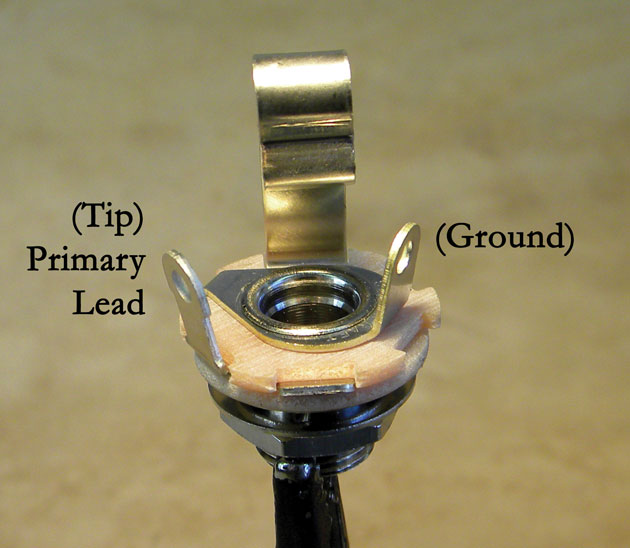You will have to click the link below as the image is too wide.
http://www.guitarsbyleo.com/GALLERY2/ma ... lNumber=12
Anyway, just interested in how/why this works, thanks,
Tom
I resized the images of the Climax wiring diagrams in the Gallery, so they will fit in forum posts.FZTNT wrote:OK all electronics guys. When I look at a guitar control board, or actually multiple guitars wiring systems, I see a lot of systems where the output jack is a typical tip, ring , sleeve connector. But the wires are only connected to the sleeve (usually ground) and ring terminals leaving the tip unconnected. Typically we use mono or tip, ring connectors for guitar cables. Wouldn't this cause a direct short because the wires only come into contact with the one connection. What happens if you use TRS cables? Here are two different examples of output jack wiring and regardless of what other paths the signal is taking in either diagram, what really is the difference and why doesn't it get electrically ugly at the other end (amp, console etc) when ground and signal are combined in the first example>
You will have to click the link below as the image is too wide.
http://www.guitarsbyleo.com/GALLERY2/ma ... ewsIndex=1
Anyway, just interested in how/why this works, thanks,
Tom
I don't see that ever. Can you cite an example?FZTNT wrote: But the wires are only connected to the sleeve (usually ground) and ring terminals leaving the tip unconnected.
Well, the first example does just that. No connection to the tip and the ring and sleeve are the connections to the amp, or whatever the down signal device is.Elwood wrote:I don't see that ever. Can you cite an example?FZTNT wrote: But the wires are only connected to the sleeve (usually ground) and ring terminals leaving the tip unconnected.
Sometimes an active circuit will use the ring and sleeve connections to connect the negative
side of the power. I haven't seen the hot signal run on the ring connection as best as I can remember.
